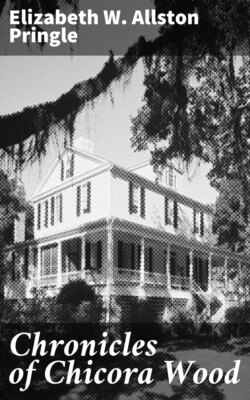Читать книгу Chronicles of Chicora Wood - Elizabeth W. Allston Pringle - Страница 8
На сайте Литреса книга снята с продажи.
ОглавлениеROBERT FRANCIS WITHERS ALLSTON, PRESIDENT OF THE SENATE.
Portrait by Flagg about 1850.
beauty was very great. It made all the difference in the world to us, his children, growing up in the country, so far from picture-galleries and concerts and every kind of music. At the sale of the Bonaparte collection of pictures in Baltimore my father commissioned the artist, Sully, to attend the sale and select and buy for him six pictures. Papa was much pleased with Mr. Sully’s selection. They included:
“A Turk’s Head,” by Rembrandt.
“The Supper at Emmaus,” by Gherardo del Notte.
“The Holy Family,” a very beautiful Gobelin tapestry. For this picture Mr. Sully was offered double the price he paid before it left the gallery.
“Io,” whom Juno in jealous rage had transformed into a white heifer. A very large and beautiful canvas, a landscape with the heifer ruminating in the foreground, watched by Cerberus, while on a mountainside Mercury sits playing on his flute, trying to lull him to sleep. (I still own this painting.)
“St. Paul on the Island of Melita,” a very large canvas representing a group of shipwrecked mariners around a fire of sticks; in the midst stands the figure of St. Paul just shaking from his finger a viper, into the fire, very dramatic.
“St. Peter in Prison,” awakened by the angel while his keepers sleep.
This is the match picture to the above and the same size.
These works of art on the walls of our country home awoke in us all an appreciation and recognition of fine paintings for which we can never be sufficiently grateful.
This great love for art and his confidence in its elevating influence is shown by his buying and having placed in the grounds of the State capitol a replica of Houdon’s statue of Washington.
Another and most characteristic evidence is furnished by the following note from a friend, to whom I wrote, asking for some facts as to my father’s public life, for I had thus far written of him entirely as I knew him in his family and home life, except for the bare outline by the dates of his election to different offices, and though I have no desire or intention of making this a history of his official and political career, feeling myself entirely unfitted for that, I felt I should give something to show his service in his own State. In reply Mr. Yates Snowden wrote:
“The day before your letter came my eye lit upon the invitation of R. F. W. Allston, president of the Carolina Art Association, inviting the members of the Convention Secession to visit the Gallery of Art in Meeting Street whilst deliberating here for the public weal. It is hoped that an hour bestowed occasionally in viewing some specimens of art, including Leutze’s illustration of Jasper and the old Palmetto Fort, may contribute an agreeable diversion to the minds of gentlemen habitually engrossed in the discussion of grave concerns of state.”—(“Journal of the (Secession) Convention,” p. W225, April 1, 1861.)
I can quite imagine that this invitation was a source, to some of the members of that convention, of great amusement, as being most unsuitable to their frame of mind.
My father’s full sympathy with the convention is shown by the following extract from Brant and Fuller’s “Eminent and Representative Men of the Carolinas”:
“Robert Francis Withers Allston, South Carolina statesman, scholar, and agriculturist, was born April 21, 1801. … During the nullification era and for many years afterward Mr. Allston was deputy adjutant-general of the militia, and from 1841 to 1864 was one of the trustees of South Carolina College at Columbia. … In politics he belonged to the Jefferson and Calhoun school, believing in the complete sovereignty of the States.”
During his prolonged absences in Columbia my father did not like to leave my mother alone on the plantation, with no one but the negroes to care for the children, so he secured a good, reliable Irishwoman to take charge of the children and the nursery, with the others under her. Strange to say, this was never resented, and Mary O’Shea stayed with us about fifteen years, when some of her kinfolk called her away. We called her “May” and were devoted to her. She had her trials, for my father did not approve of fire in the room where the children slept, and this, along with the open window, was a terrible ordeal to May. The day-nursery, with its roaring open wood-fire, only made the contrast more distressing to her; she never became reconciled to it, and I only wonder that she stayed all those years. As soon as the older children were big enough, we had an English governess—Miss Wells first, and afterward Miss Ayme.
I have asked my brother, Charles Petigru Allston, to write for me what he remembered of my father, and I will insert here what he has written for me.
